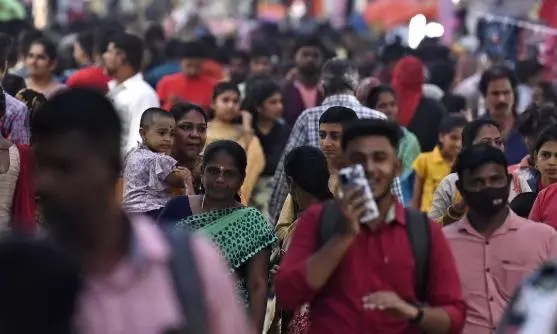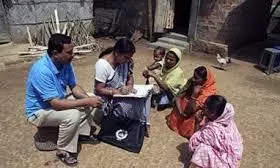
Concerns around population and census
text_fieldsIndia has emerged as the world’s most populous country for the second consecutive year, according to the latest report by the United Nations Population Fund (UNFPA). The country, which overtook China in 2023, is expected to reach a population of 1.46 billion by the end of 2025. This development is not unexpected, as various organizations, including the UNFPA, had forecasted based on census data and population policies that India would surpass China by the turn of the millennium. What’s remarkable is that this prediction came true two years earlier than expected. Moreover, some studies now estimate that India's population could reach 1.7 billion by 2055. However, what sets this UNFPA report apart are the critical insights it offers. Chief among them is the observation that many countries, including India, are on the brink of a population collapse that is expected to become starkly evident within the next 40 years. Although the global population continues to rise, the rate of reproduction is declining significantly. The report raises concerns that this trend may lead the world into various crises in the future.
The report precedes India's upcoming national census, scheduled for next year. According to the 2011 census, the most recent to date, India was the second-most populous country after China. When India rose to the top of the global population list about a year and a half ago, the central government couldn't make an official announcement because of a lack of conclusive data. We still have to wait at least two years to obtain accurate and up-to-date population figures. Until then, all government programs, whether related to public welfare or not, will continue to rely on outdated data. Needless to say, this will significantly impact the effectiveness of such programs. In that sense, the UNFPA report also highlights the sluggish pace of administrative processes in India. At the same time, the report’s findings on declining birth rates raise urgent questions that the upcoming census must address. At the time of India’s independence, the population stood at around 340 million, with a Total Fertility Rate (TFR) of approximately six, meaning each couple had an average of six children born during that time. By 1960, the population had risen to 436 million, and the TFR was even higher. Over the last 65 years, the population has increased by 1 billion, but the TFR has dropped to 1.9. A TFR of 2.1 is considered the replacement level required to maintain a stable population. If the current trend continues, India’s population may begin to decline in the near future. This is not a uniquely Indian concern, it is a global issue. The fear of a population explosion has faded; the pressing issue now is the consequences of a collapsing global population.
Population decline is already visible in several regions around the world. In 2024, Japan recorded the fewest births in a century. Scandinavian countries have also experienced a marked decline in TFR. A similar trend is seen in Kerala, which often draws comparisons with Scandinavia for its healthcare model. In 2011, over 500,000 babies were born in the state; by 2024, that number had fallen below 400,000. Even in 2011, Kerala’s population growth was under five percent; now it is projected to exceed eight percent. This sharp decline in births means a decline in young people in the population. Meanwhile, advances in healthcare is increasing life expectancy. Kerala is fast becoming a state predominantly inhabited by the elderly. The rising migration trend among the youth is also turning the state into a place of only the elderly. Currently, 17 percent of its population is of the elderly. This figure is expected to reach 20 percent within a decade, and estimates suggest that by 2045, the elderly will outnumber the youth.
This demographic shift is likely to lead to a range of complex social and economic challenges. Proactive measures are urgently needed to tackle this emerging crisis. The recent establishment of the Kerala Government’s Commission for the Elderly is a step in the right direction and may serve as a model for the rest of the world. The UNFPA report, titled The Real Fertility Crisis, underscores the need for comprehensive and structured global strategies to address this population challenge. In short, the population control narratives of past decades, influenced by Malthusian theories, are now outdated; what the world must urgently discuss are the causes and implications of a falling human population that has arisen as a result of such control measures.




















